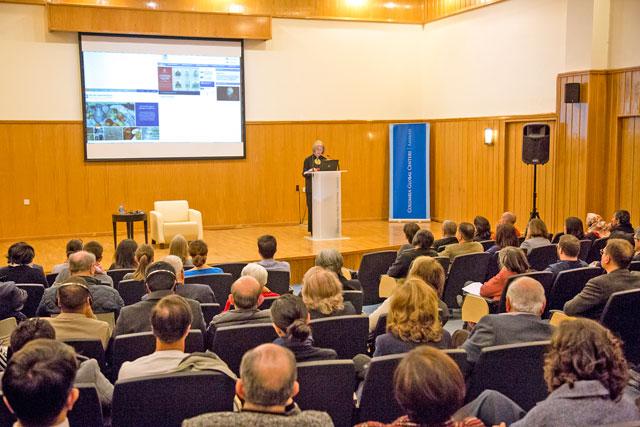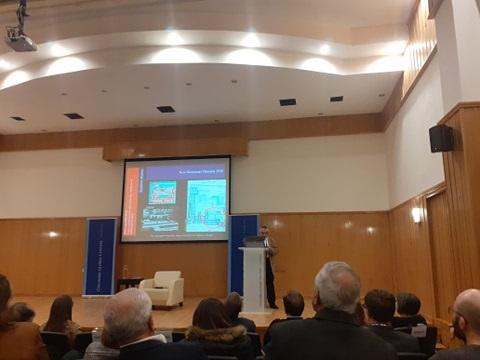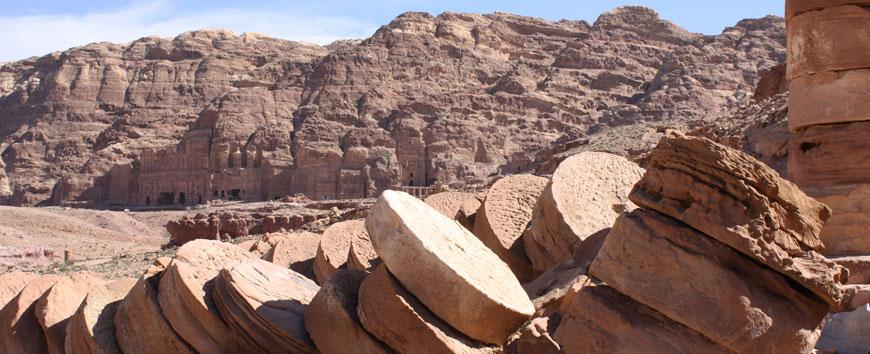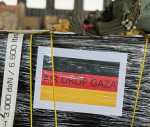You are here
American scholar highlights cultural preservation techniques in war-torn countries
By Saeb Rawashdeh - Feb 12,2018 - Last updated at Feb 12,2018

Sheila Canby addresses the audiance at Columbia Global Centres on Friday (Photo courtesy of Columbia Global Centres in Amman)
AMMAN — Columbia Global Centres in Amman on Friday organised a lecture titled “From Destruction to Documentation: a Talk by Sheila Canby”, which saw the attendance of a number of academics and experts in heritage preservation, in the presence of Tourism Minister Lina Annab.
Canby, who is in charge of the Department of Islamic Art at The Metropolitan Museum of Art in New York, discussed some of the challenges that curators and academics face in the region in terms of protection and preservation of sites and collections in war-torn countries like Syria and Iraq.
“What brought us together was the deep concern for museums, monuments and archaeological sites in Iraq and Syria that have suffered deplorable damage in the past years at the hands of Daesh, other combatants and looters," the scholar said.
“Yet, in the midst of this terrible situation, staff at the museums and at sites have acted heroically doing whatever they could to safeguard collections of movable objects,” Canby stressed.
The scholar reviewed how the Metropolitan Museum and Columbia University responded to the need for tools to produce digital collection inventories, outlining other initiatives that might address the cultural heritage preservation of Iraq and Syria.
She referred to the “documentation pack”, consisting of a backpack containing a camera, portable LED lights, tripod, laptop, iPhone and various chargers.
“The equipment can be used in the field or areas with unreliable power supply,” the expert underlined.
Following a two-day workshop held in Amman in 2015, scholars trained nine people from museums in Iraq and Bosra in Syria, she recalled.
With such documentation, photographers can take photos of sites and objects which can be uploaded to a database including inventory number, description and any relevant information, Canby said, adding that, ideally, these would be stored in the Cloud,ensuring safe storage of information in case access to the museum is blocked.
“Likewise, the pack can be used at archaeological sites for inventory files,” she continued, adding that,as long as information remains available only to museum staff, risks in case of invasion or other disasters are heightened.
“For this reason, we recommended that photographs taken with the kit be used in the museum publications, guidebooks as well as scholarly articles,” the expert underlined
Making the photographs available on museums’ websites was also cited as a way for international law enforcement agencies like Interpol to work effectively in identifying and countering the sale of looted art.
“Some of the only drawbacks are that these documents can become magnets for thieves and looters,” the expert warned
“Looting of sites is nothing new, and most cities with museums are widely known. So, one could argue that if the site is going to be a target of theft it is preferable to have the documentation of the stolen artefact available to supply those who are committed to stopping art trafficking,” she underscored.
Canby emphasised the importance of coordination between experts and museum staff and of introducing the concept of cultural heritage to school children as they are the ones who will inherit cities, landscapes and remnants of their countries' past civilisations.
“The local documentation can serve many purposes and become a potential bulwark against those who wish to bulldoze the past and erect buildings with no character and connection to the history and culture,” Canby concluded.
Related Articles
AMMAN — The collapse of the Ottoman Empire in 1918 and the Great Arab Revolt created a “new reality”, according to a Syrian archaeologist.Sp
AMMAN — With the aim of preserving archaeological artifacts at the Jordan Archaeological Museum located at the Amman Citadel, the German Pro
AMMAN — “Often, we are asked a question: ‘Why should we bother with cultural heritage while there are humanitarian crises, like in Syria?’”

















